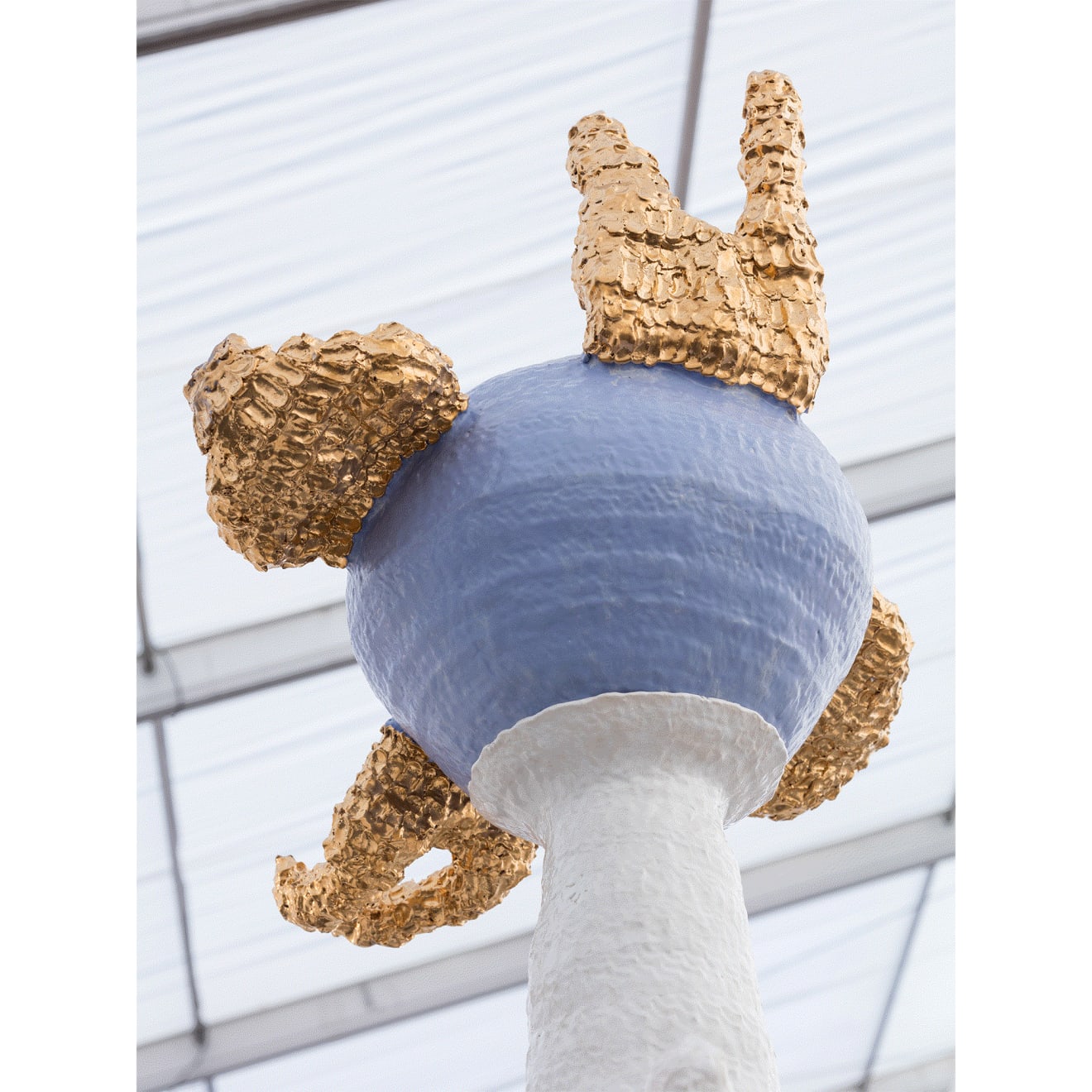Nicholas Pope: Yahweh and the Seraphim: Frieze London
Yahweh and the Seraphim was originally conceived as the reredos of a large-scale project initiated in the early ‘90s called the Oratory of Heavenly Space, which Pope intended as a kind of non-denominational chapel, a place of contemplation but without doctrine.The project marked a turning point in Pope’s artistic development both in method and intellectual approach. Pope had received early critical acclaim and, as one of Britain’s leading contemporary sculptors, was chosen to represent Britain at the Venice Biennale in 1980. But during a research trip to Africa in 1982 he contracted a rare form of encephalitis, which left him severely debilitated for nearly ten years. This long period of rehabilitation inevitably led to a shift in approach not least philosophically, but also in the materials and techniques he began to use.
“The idea for the chapel came from the pits somewhere, when I began to think about making work again, but couldn’t get hold of anything,” he writes in the booklet to accompany his 1998 exhibition ‘I Believe or do I’.
“I tried to go back – back and further back – casting about for some primitive substance, I suppose – hitting scriptural bedrock at last...," he says of the decision to create a chapel, "a place of safety and absolution."
In a move towards softer, more malleable materials such as glass, porcelain, moulded aluminium and ceramics, Pope began to make abstract works referencing complex themes of belief, suicide and society. The installation continues Pope’s career long fascination with systems of belief, a preoccupation which has become particularly apt in the current political climate, where ‘expertise’ is increasingly mistrusted and beliefs are frequently considered more powerful than rationale.



